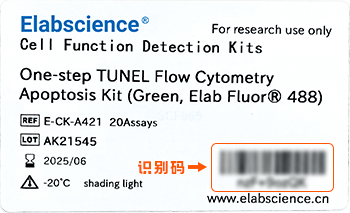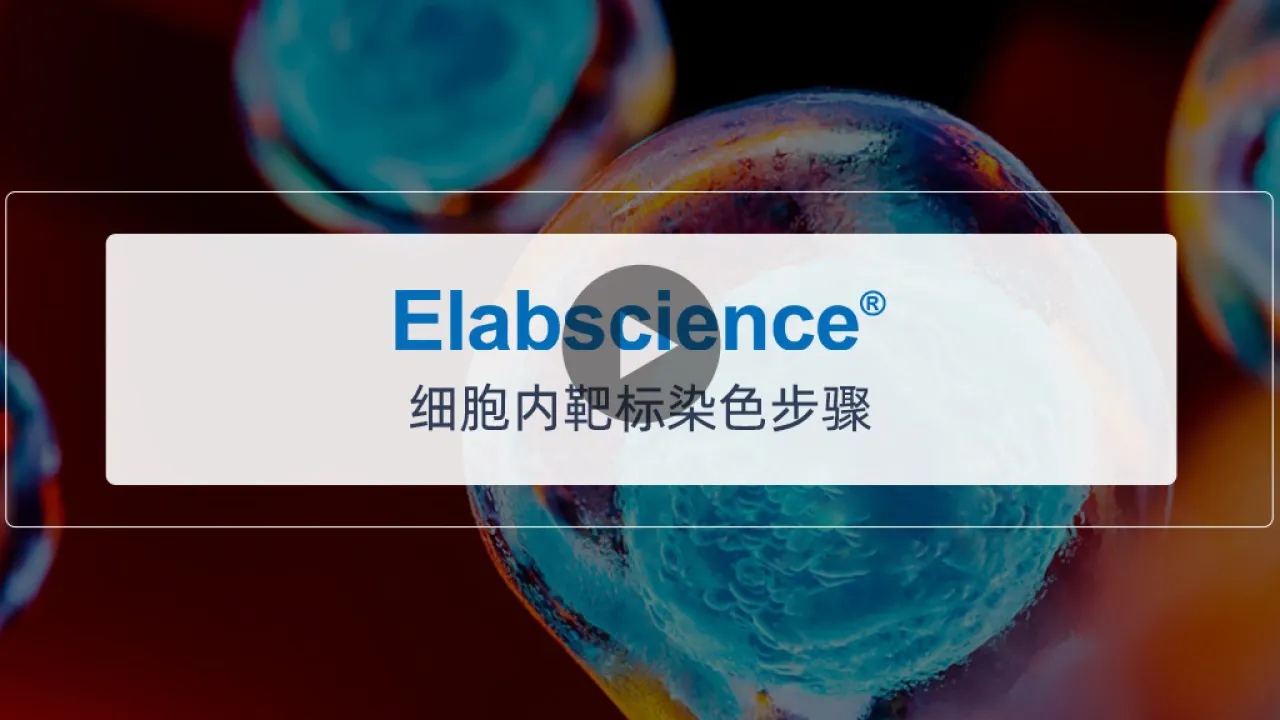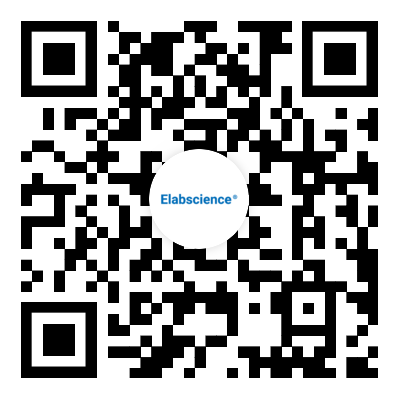FITC Anti-Mouse CD206/MMR Antibody[C068C2]
![FITC Anti-Mouse CD206/MMR Antibody[C068C2]](http://files.elabscience.cn/assets/images/loading.png)
Price:
- 应用性: FCM;ICFCM
- 亚型: Rat IgG2a, κ
- 宿主: Rat
| Alternate Names | MMR, MR, MRC1, macrophage mannose receptor, mannose receptor |
| Cellular Localization |
Membrane;Endosome
|
| Clone No | |
| Isotype | Rat IgG2a, κ |
| Leadtime |
咨询
|
| Background |
CD206, also known as mannose receptor (MR), is a 175 kD type I membrane protein. It is a pattern recognition receptor (PRR) belonging to the C-type lectin superfamily. MR is expressed on macrophages, dendritic cells, Langerhans cells, and hepatic or lymphatic endothelial cells. MR recognizes a range of microbial carbohydrates bearing mannose, fucose, or N-acetyl glucosamine through its C-type lectin-like carbohydrate recognition domains, sulfated carbohydrate antigens through its cysteine-rich domain, and collagens through its fibronectin type II domain. MR mediates endocytosis and phagocytosis as well as activation of macrophages and antigen presentation. It plays an important role in host defense and provides a link between innate and adaptive immunity. Recently, MR on lymphatic endothelial cells was found to be involved in leukocyte trafficking and a contributor to the metastatic behavior of cancer cells. It suggests that MR may be a potential target in controlling inflammation and cancer metastasis by targeting the lymphatic vasculature.
|
| Abbre | CD206 |
| Swissprot | |
| Host | Rat |
| Reactivity | Mouse |
| Clonality | Monoclonal |
| Isotype Control | |
| Applications | |
| Form | Liquid |
| Concentration | 5 μL/Test |
| Conjugation | FITC |
| Conjugation Information | FITC is designed to be excited by the Blue laser (488 nm) and detected using an optical filter centered near 530 nm (e.g., a 525/40 nm bandpass filter). |
| Spectrum |  |
| Storage Buffer | Phosphate buffered solution, pH 7.2, containing 0.09% sodium azide and 1% BSA. |
| Storage | This product can be stored at 2-8°C for 12 months. Please protected from prolonged exposure to light and do not freeze. |
| Expiration Date | 12个月 |
| Shipping |
冰袋 |
| Gene ID |
-
Poldip2 Aggravates inflammation in diabetic retinopathy by impairing mitophagy via the AMPK/ULK1/Pink1 pathway
IF: 5.2 -
OTUD4-mediated inhibition of YAP1 signaling pathway in ovarian cancer: Implications for macrophage polarization and recruitment
IF: 4.8 -
Macrophage Membrane-Cloaked ROS-Responsive Albumin Nanoplatforms for Targeted Delivery of Curcumin to Alleviate Acute Liver Injury
IF: 4.5 -
Diffuse large B-cell lymphoma cell-derived exosomal NSUN2 stabilizes PDL1 to promote tumor immune escape and M2 macrophage polarization in a YBX1-dependent manner
IF: 3.8Journal: ARCHIVES OF BIOCHEMISTRY AND BIOPHYSICS (2025)Reactivity:Human -
Cationic liposomes encapsulating IL-2 selectively induce apoptosis and significantly reduce the secretion of cytokines on M1-murine polarized macrophages
IF: 3.7 -
Nanoparticles destabilizing the cell membranes triggered by NIR light for cancer imaging and photo-immunotherapy
IF: 14.7Journal: Nature Communications (2024)Reactivity:MouseSample Type:CT26 cell-Xenograft,lymph node(LNDs) -
In situ reprogramming of tumor-associated macrophages enhances cancer immunotherapy
IF: 13.2Journal: Nano Today (2024)Reactivity:MouseSample Type:CT26 cell-Xenograft -
Enhancing myocardial infarction treatment through bionic hydrogel-mediated spatial combination therapy via mtDNA-STING crosstalk modulation
IF: 10.5 -
A POSS-Based Metal-Phenolic Network with Coupled Hardness and Softness for Photodynamic-Immunotherapy of Triple-Negative Breast Cancer
IF: 9.6Journal: ACS Materials Letters (2024)Reactivity:MouseSample Type:4T1 cell-Xenograft -
A multifunctional composite nanoparticle with antibacterial activities, anti-inflammatory, and angiogenesis for diabetic wound healing
IF: 7.7Journal: INTERNATIONAL JOURNAL OF BIOLOGICAL MACROMOLECULES (2024)Reactivity:Human
| E-CK-A105 | 10×ACK Lysis Buffer | 500 mL , 200 mL , 100 mL |
| E-CK-A107 | Cell Staining Buffer | 500 mL , 200 mL , 100 mL |
| E-CK-A109 | Intracellular Fixation/Permeabilization Buffer Kit | 500 Assays , 100 Assays , 50 Assays |
Q11:IHC实验,想知道抗原修复条件是什么?是用EDTA还是枸橼酸钾?
修复条件一般为高温高压或者微波加热修复。
例如:抗原修复(高压法) :压力锅中加入足以淹没切片的 10 mmol/ml 的枸橼酸盐缓冲液(pH 6.0) (配制:将抗原修复液溶于相应体积 ddH2O中,混匀),加热至沸腾,切片置耐热塑料切片架上,放入锅中,盖好锅盖,扣上压力阀,继续加热,设置保压 4 min,时间到后打开放气阀放气,压力归零后开锅盖将内锅取出放置室温冷却,待溶液冷却至室温后取出切片(约30 min)。
抗原修复(微波法) :烧杯中加入足以淹没切片的 10 mmol/ml 的枸橼酸盐缓冲液(pH 6.0) (配制:将抗原修复液溶于相应体积 ddH2O中,混匀),加热至沸腾,切片置耐热塑料切片架上,放入烧杯中,中小火加热30min后取出,放置室温冷却,待溶液冷却至室温后取出切片(约30 min)。
IHC修复液的选择建议参考抗体使用说明书,或者参考以下方案:人体样本,优先推荐使用pH9.0的EDTA修复液(临床样本);大/小鼠样本,优先推荐使用pH6.0的枸橼酸修复液(科研样本)。
Q12:IHC在数据表上是什么意思?是冷冻切片吗?与IHC-F区别?
IHC是免疫组化实验,使用的切片一般包含有IHC-P(石蜡切片)和IHC-F(冰冻切片)两种。

暂无文件,请在搜索框输入识别码查询相关文件

| 名称 | 状态 | 有效期至 | 操作 | |
|---|---|---|---|---|
| {{item.文件名}} | {{item.status_str}} | {{item.timestamp_str}} | 点击查看 点击预览 |
*注:请在有效期内下载相关文件,过期后页面内将不提供文件下载及预览!











